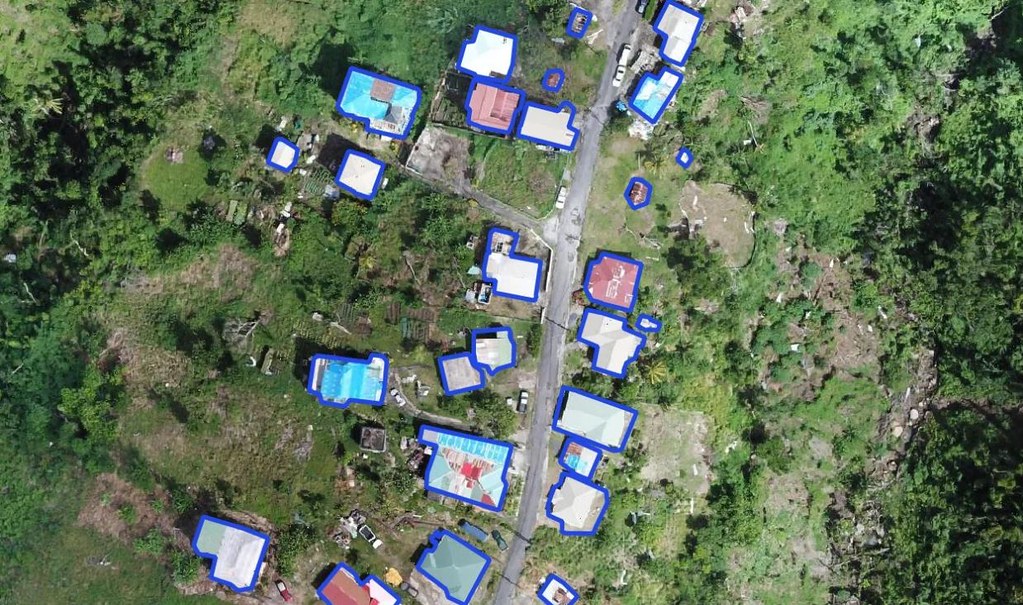by Melody Benavidez
Despite growing global commitment to building disaster and climate resilience, implementation efforts often remain siloed. Two critical areas—disaster risk finance (DRF) and climate-resilient housing—frequently operate in parallel, rather than in partnership. Planning and construction sectors focus on building codes, permitting, and structural standards, while financial institutions design instruments for recovery and adaptation. The lack of coordination between these domains results in inefficiencies and missed opportunities to scale impact.
This divide can have profound consequences. In 2017, Hurricane Maria devastated Dominica, damaging over 90 percent of its housing stock. The extent of the destruction reflected not just the intensity of the storm, but the absence of widespread, financially enabled resilient construction practices.
In response, Dominica set an ambitious vision: to become the world’s first climate-resilient nation. This vision—articulated through the Climate Resilience and Recovery Plan (CRRP)—encompasses not just infrastructure upgrades, but institutional strengthening, community preparedness, and financial resilience. While other countries share similar aspirations, Dominica's integrated and government-endorsed approach provides a unique test case for achieving national climate resilience.
To support this effort, the World Bank’s Global Facility for Disaster Reduction and Recovery (GFDRR) launched a technical assistance initiative to better integrate resilient housing and disaster risk finance. Funded by the European Union’s Caribbean Regional Resilience Building Program, the technical assistance was implemented through GFDRR’s disaster risk finance and building regulations initiatives. This work provided practical insights not only for Dominica, but for countries across the Caribbean and beyond.

Photo: OpenAerialMap. Creative Commons (CC)
Key Insights: Aligning Finance and Resilient Housing Construction
1. Developing Scalable Financial Instruments
One of the technical assistance’s central contributions was supporting the development of the Disaster and Climate Adaptation Financing Framework (DCAFF). Building on the Climate Adaptation Financing Facility (CAFF) initially piloted in Saint Lucia, DCAFF provides a model for aligning financial products with resilient construction goals. It enables public and private sector actors to offer concessional loans and blended financing tailored for home retrofits and resilient upgrades. DCAFF is designed to be sustainable, scalable, and responsive to the needs of low- and middle-income households—ensuring that resilience is not a luxury, but an accessible standard.
2. Enhancing Access to Risk and Cost Data
Effective decision making depends on accurate, accessible data. The technical assistance conducted a detailed assessment of cost-effective housing retrofit options and developed a retrofitting guide targeted at homeowners, contractors, financial institutions, and policymakers. The guide outlines practical measures ranked by cost-efficiency and resilience impact, helping stakeholders prioritize interventions with the greatest return on investment across the housing value chain.
3. Encouraging Cross-Sector Collaboration
Although finance and construction sectors share overlapping goals, collaboration is rare. The technical assistance facilitated dialogues with the re/insurance sector on integrating parametric insurance with retrofit financing. This approach explores how financial incentives—such as premium discounts or reinvestment of payouts—can motivate more resilient building practices. Early engagement revealed strong interest from banks and insurers in exploring these linkages, highlighting an untapped opportunity for market-driven resilience solutions.
4. Building Human Capital for Resilient Construction
A resilient built environment requires skilled professionals. The technical assistance launched a pilot training program in Dominica targeting architects, engineers, and public officials. The program focused on building codes, climate risk awareness, and risk communication. Looking ahead, institutionalizing continuous professional development and offering incentives—such as certification programs—could further strengthen implementation capacity.
Toward an Integrated Resilience Ecosystem
One of the most promising outcomes of the technical assistance was the convening of Dominica’s first Disaster Resilience and Financing Symposium for the Housing Sector. This multi-stakeholder forum brought together public agencies, private financial institutions, academic partners, and civil society to co-develop a preliminary roadmap for strengthening the link between physical and financial resilience.
Since then, the government has partnered with a non-profit organization Build Change to conduct an extensive survey of the existing housing stock to assess vulnerability to climate and natural hazards. The survey findings highlight both progress and persistent gaps since Hurricane Maria and provide a baseline for future housing programs. As part of the next steps, the government is exploring the design of a housing retrofit program and affordable financial solutions to support its implementation. These efforts reflect a broader commitment to integrating resilient construction with financial strategies that promote long-term sustainability.
Dominica’s journey underscores a broader lesson: achieving resilience at scale requires coordination, not only between sectors, but between vision and action. The path forward lies in unlocking the full potential of finance and construction to work together—delivering safer, stronger, and more climate-resilient communities.
